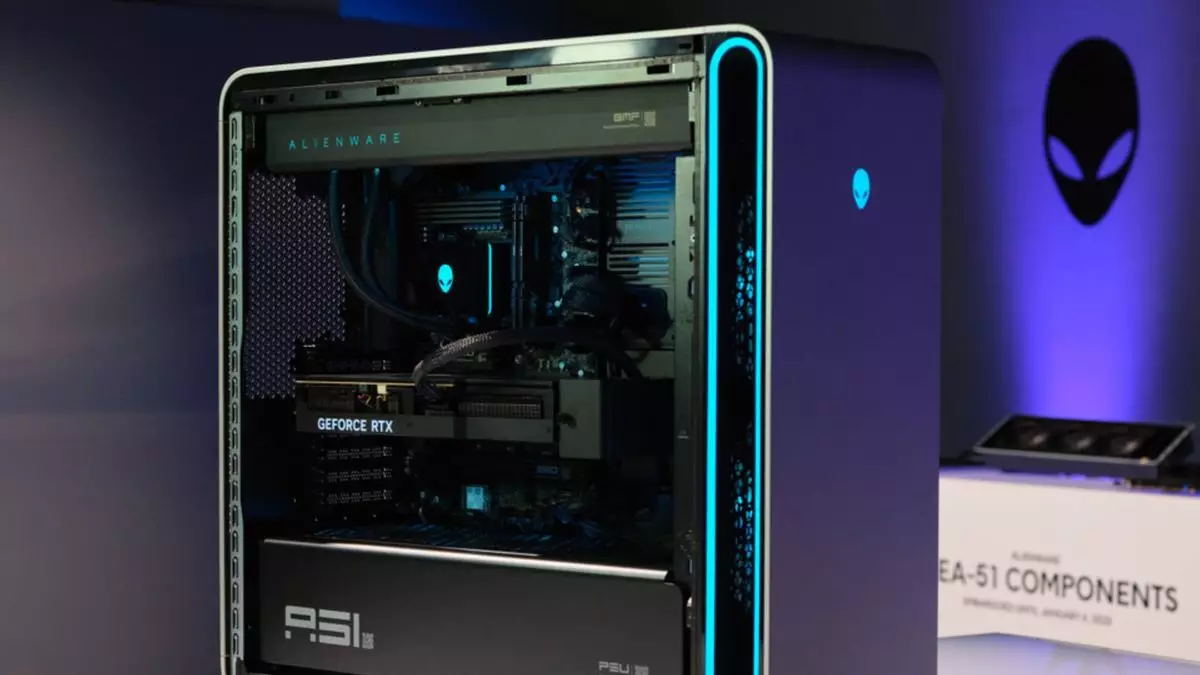In the world of high-performance gaming desktops, Alienware has established itself as a brand synonymous with style, power, and innovation. At CES this year, the excitement surged as Alienware teased its fully upgradeable Area-51 desktop rig, promising gamers a new lease on how they think about performance and customization. However, beneath this shiny exterior is an underlying complexity, mired in additional costs and frustrating limitations that tarnish what could be a groundbreaking product.
The Ups and Downs of the Area-51 Rig
On the surface, the concept of a fully upgradeable desktop is a huge step in the right direction. Alienware claims that the Area-51 is the “most quiet, coolest running, and highest performance desktop” to date. With its integration of cutting-edge RTX 50 series graphics cards and an impressive focus on thermals and airflow management, the Area-51 certainly makes a compelling case for being at the forefront of modern gaming rigs. The positive pressure airflow is particularly noteworthy, effectively minimizing dust intake and enhancing performance longevity.
But the narrative takes a rather disheartening twist when you dig deeper into the motherboard upgrade potential. In order to utilize a different motherboard with this high-end chassis, users must purchase a special AlienFX board cable conversion kit for an additional $35. What may seem like a minor investment quickly becomes a source of frustration, as it introduces a barrier that contradicts the very essence of “upgradeability.” To add insult to injury, the rig’s compatibility is almost Orwellian in its limitations; only specific types of motherboards can be used, and retrofitting older models is not an option.
The Price of Customization
The frustrating limitation of needing additional components to access full upgrade potential makes one question the intent behind Alienware’s design choices. While the dimensions of customization for GPU, RAM, and SSD upgrades remain relatively open and straightforward, the motherboard constraints limit future expansion. For an enthusiast community that values flexibility and modification, the added costs of auxiliary cables seem to be an unnecessary hurdle in what should be a pioneering effort by Alienware.
The ironic twist is that while gamers are given an opportunity to customize their experience—the stated hallmark of PC gaming—the commitment to that notion feels superficial when it comes bundled with limitations. A cute touch, such as QR codes for upgrade guidance, cannot mask the fact that the motherboard remains a bottleneck in enhancing performance as needed.
The Aesthetic Appeal versus Practical Functionality
A critical perspective reveals that Alienware’s Area-51 offers compelling visual aesthetics—after all, it’s designed to captivate. Yet practicality seems to take a back seat. The gleam and sophistication might delight buyers looking for a showpiece, but for serious gamers wanting a machine that evolves with their requirements, these limitations become hard to overlook.
Considering that the last Area-51 model appeared back in 2017, one hoped for a substantial evolution that not only looked good but performed well across various fronts. Instead, the entire experience feels like Alienware’s two steps forward, one step back approach. The promise of modularity is contradicted by the extra expenses and convoluted processes needed to secure that very modularity.
Ultimately, while the Area-51 gaming rig has a compelling narrative and aesthetic charm, it feels more like a beautifully wrapped gift with hidden strings attached. For the everyday gamer or the seasoned enthusiast, these hurdles could turn a potential investment into a souring experience, transforming what should be a game-changing offering into a frustrating conundrum. Alienware may indeed have the visuals, and perhaps even the cooling technologies, but in delivering true upgrade capability, they may need to reflect on their definition of “upgradeability” and reconsider what it means to truly empower their consumers.

